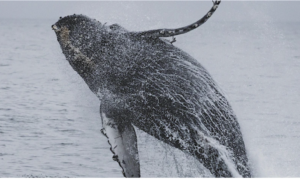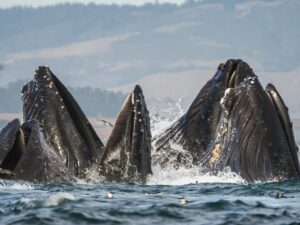
Anyone who lives in or near California’s many historic fishing communities like Morro Bay, Monterey, or Half Moon Bay, has probably heard the term “ropeless” crab fishing gear. That’s the new buzzword for equipment being promoted by environmental groups to solve the perceived problem of whale interactions with fishing gear.
These groups have convinced the California Department of Fish and Wildlife (CDFW) to adopt onerous new regulations that will force crab fishermen to adopt expensive, impractical, and unproven fishing gear. What they don’t seem to realize is that this action will economically devastate — to the tune of hundreds of millions of dollars annually — the many coastal communities and working families that rely on the fishing and seafood industry.
Sadly, these regulations went into effect on November 1.
But the action these groups are promoting isn’t based on the best available science. In fact, it isn’t based on any data or science at all. The claim is that humpback whale entanglements with crab fishing gear that result in death are now high enough for the population to slip into decline.
However, the truth is there have only been four mortalities attributed to California commercial Dungeness crab gear since 2013, and none during the last two seasons. Meanwhile, strikes by large ships likely cause 50-150 whale deaths a year off the West Coast, according to the Cascadia Research Collective (CRC), a highly respected marine mammal study center.
Even still, whale population numbers are soaring. John Calambokidis and Jay Barlow from the CRC recently released a report titled “Update on blue and humpback whale abundances using data through 2018.” The researchers concluded that the California-Oregon-Washington humpback stock is now 7,205. This figure shows that whales are abundant and not in danger. It’s far higher than the previously thought 3,500 figure.
So do we really need the so-called “ropeless” gear? The short answer is no because it’s actually more harmful to whales than existing crab fishing equipment. That’s because this gear has a fatal flaw — it’s designed and manufactured by those who have little real-world experience as fishermen. Far from being ropeless, it has multiple buoy lines packed on top of the trap with an acoustic release trigger that, in theory, allows the buoy to go to the surface when activated. In practice, this adds to the problem of lost gear with ropes and buoys attached. It’s much more dangerous to marine life because it litters the ocean with lines and other equipment that otherwise would not have been lost.
How do we know this? Both the East Coast lobster fishery and the West Coast Dungeness crab fishery, each of which are made up of thousands of independent fishermen, have tested the pop-up “ropeless” gear and found it to be faulty. The release mechanisms malfunction and must be abandoned at a rate of nearly 20 percent, an order of magnitude greater than conventional gear.
What’s more, current fishing traps cost between $160-225 each. But the pop-up “ropeless” gear costs as much as $2,500 per trap. That means for a 500-trap tier operation to adapt an existing gear allotment to 100 percent pop-up gear, it would cost between $360,000 and $1,255,000. Many fishermen simply can’t afford this.
But fishing families won’t be the only casualties, tens of thousands of shoreside jobs supported by the crab fishery, including those involved with unloading, processing, distributing, food service, and retail, will also be lost.
It doesn’t have to be this way. Commercial crabbers have been improving fishing equipment for years in order to mitigate risk to marine mammals. They have the experience and the incentive to design and use effective gear. Their good judgment continues to result in huge reductions in whale interactions.
The bottom line is that the regulations CDFW is preparing to enact will introduce far more harm than good, both to fishermen and the environment. Regulations on the Dungeness crab industry must reflect the best available science. The negligible impact of the industry on whale populations, as well as the industry’s cultural and economic importance to our coastal communities, must be considered in any decision. Otherwise, the continuation of California’s crab fishery and indeed the future of the entire West Coast commercial fishing industry will be in serious jeopardy.




